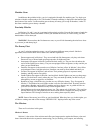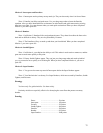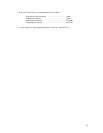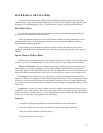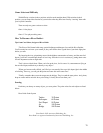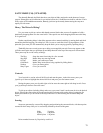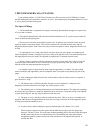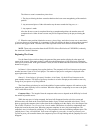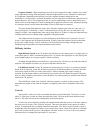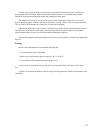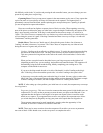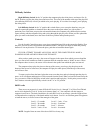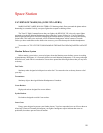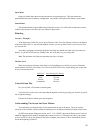Computer Method - When computing its next move, the computer does what is called a "tree search"
using "alpha-beta" pruning. What this means is that the computer picks a move, then picks a countermove
by its opponent. Depending on the difficulty level, the computer continues making moves and
countermoves. At some point, it evaluates the board to see how many pieces each side has, and what sort of
position the pieces are in. The computer does this for various combinations of moves and picks the move
which will be most advantageous of itself, assuming that its opponent will do the same. Alpha-beta pruning
is a technique which is used to reduce the number of moves which must be examined.
The game number determines how many "plies" deep the computer goes in the tree. One "ply" is a
move by one-player. Technically, a "move" is considered to be two-ply (one move by each player). For
example, in Game 1 the computer only looks one ply deep. However, if there is a jump, the computer keeps
searching until there are no further jumps, regardless of the game number.
The computer becomes progressively more intelligent as the difficulty level is increased. At level 1
(Game 1), the computer does no positional checking. It simply counts the number of pieces on the board,
giving extra weight to kings. At level 4 and above, all of the positional checking is brought into play,
including king row protection, and center and double corner control.
Difficulty Switches
Right Difficulty Switch: In the "B" position, the left player in a two-player game, or a single player in
a one-player game is "black" and starts the game. In the "A" position, the right player in a two-player game
or the computer player in a one-player game is "black" and starts.
Switching the right difficulty switch when it is your turn to play will cause you to trade sides with the
computer. The computer will take over your pieces and make the next move.
Left Difficulty Switch: Use the "B" position for normal game play. Use the "A" position to setup the
board. In the set up mode, use the left Joystick to place pieces on the board wherever you want. Move the
cursor to the square in which you wish to place a piece. It does not matter if the square is empty or
occupied. Press the button on the Joystick and the pieces of each color will flash in that square. When the
piece you want is flashing in the square, release the button. To continue game play return the left difficulty
switch to the "B" position.
The left difficulty switch is not "checked" while the computer is working on the next move. This
means that moving the switch when the computer is computing a move has no immediate effect on the
move.
Controls
The Joystick is used to move the cursor and/or the checkers around the board. The cursor is a red or
white "X" (dark grey or white on a black-and-white television). The color of the cursor indicates whose
turn it is. The cursor can only be moved diagonally on the black squares.
To move one of your checkers, push the red controller button when the cursor is in the same square as
the piece you wish to move. This "picks up" the piece. Then move the checker to the square you wish to
occupy. To complete the move, push the controller button again. This "drops" the piece. Before you have
dropped the piece, the computer will allow you to return it to the square it came from and move a different
piece. After you have made you move, the computer will make its move. You can use the set up mode to
take back moves or rearrange the board while it is your move.
82



